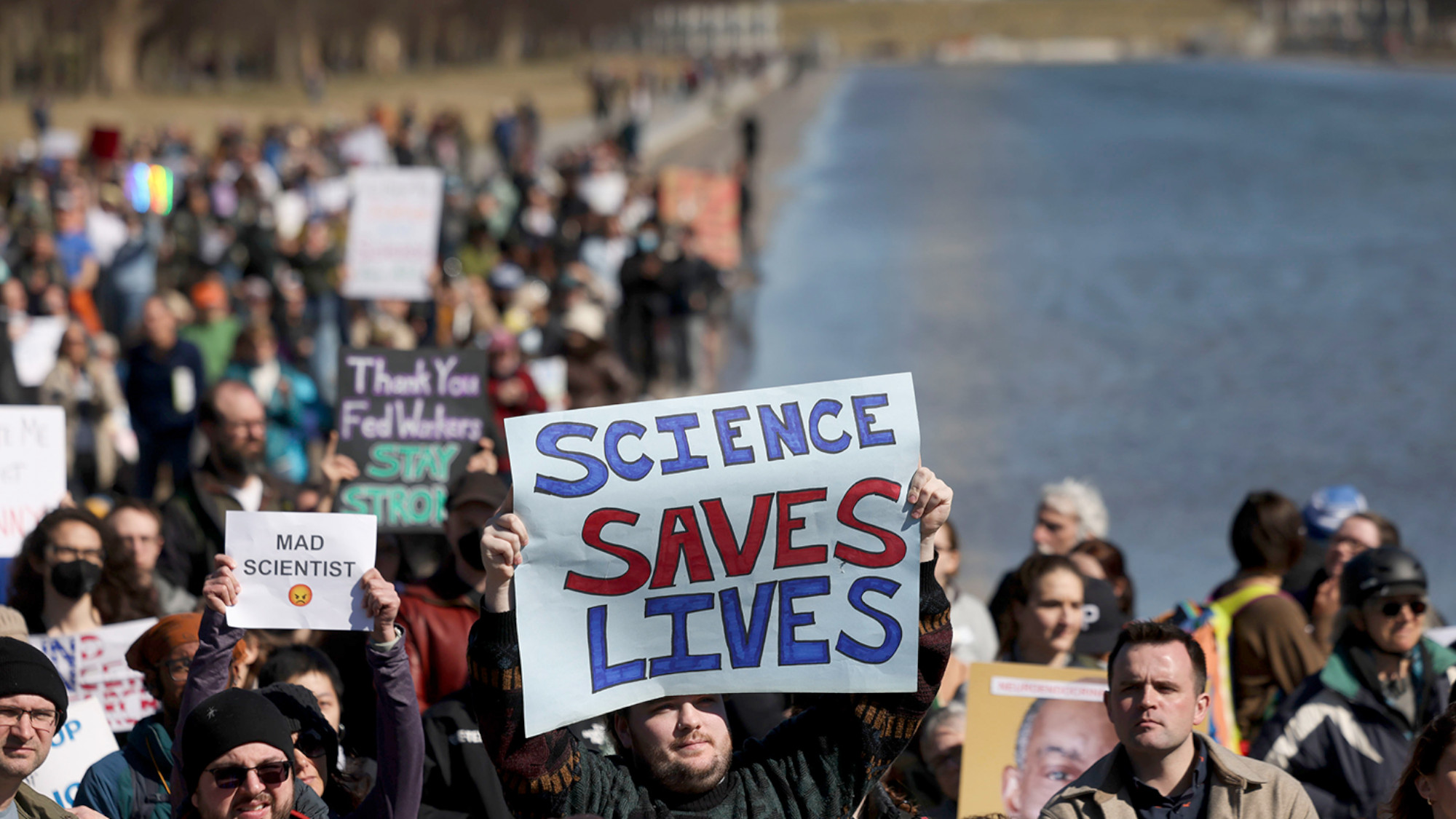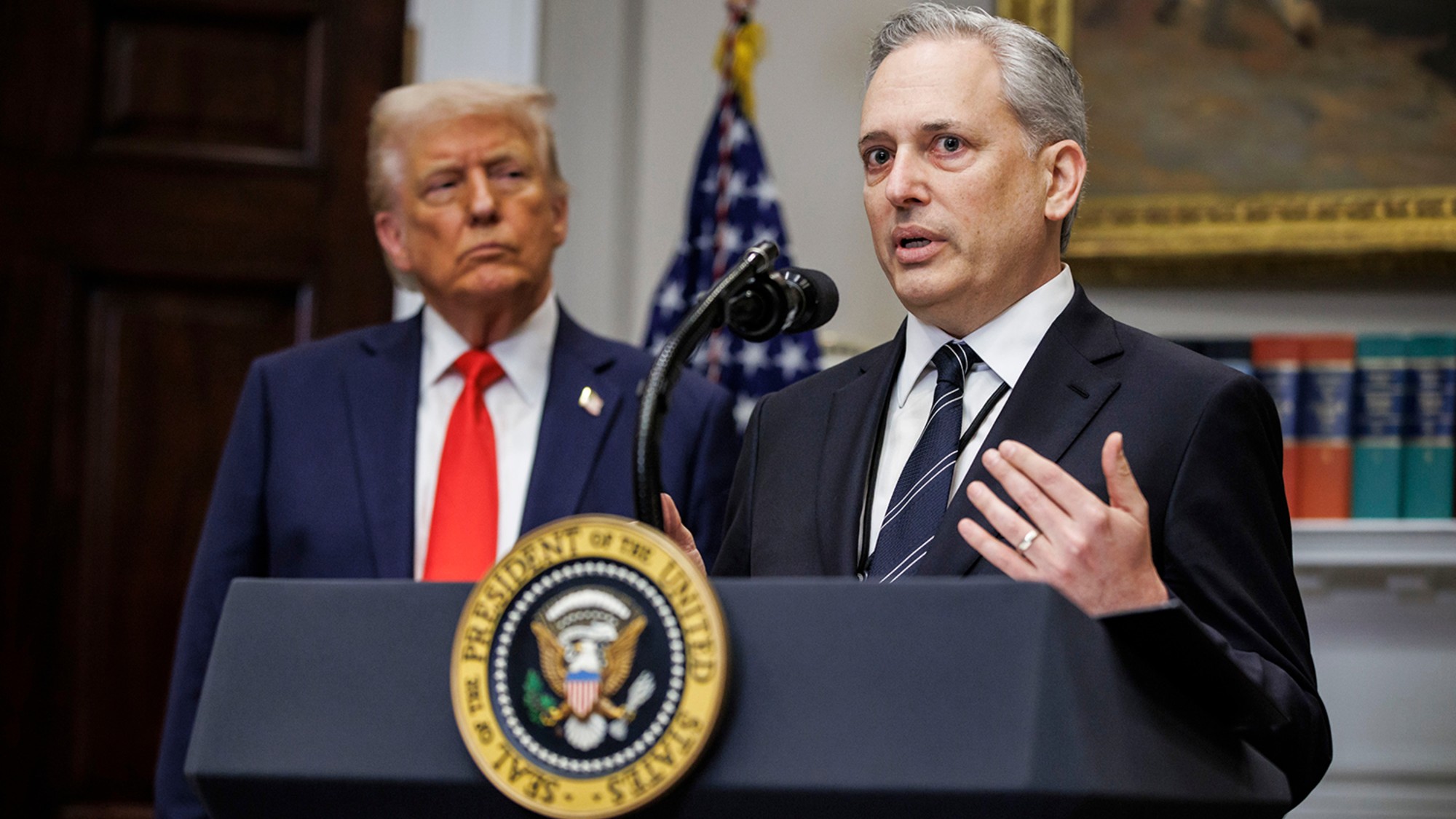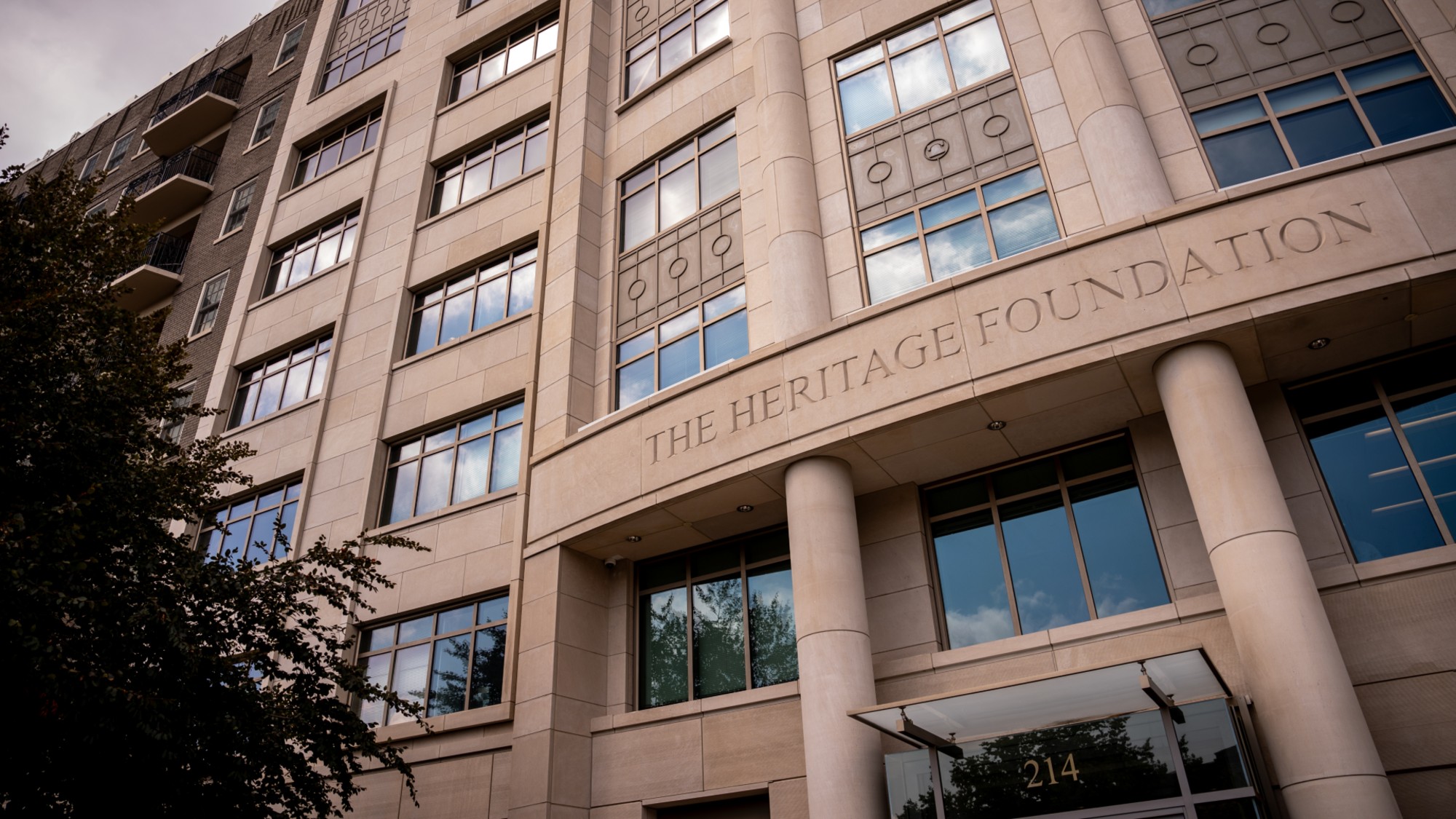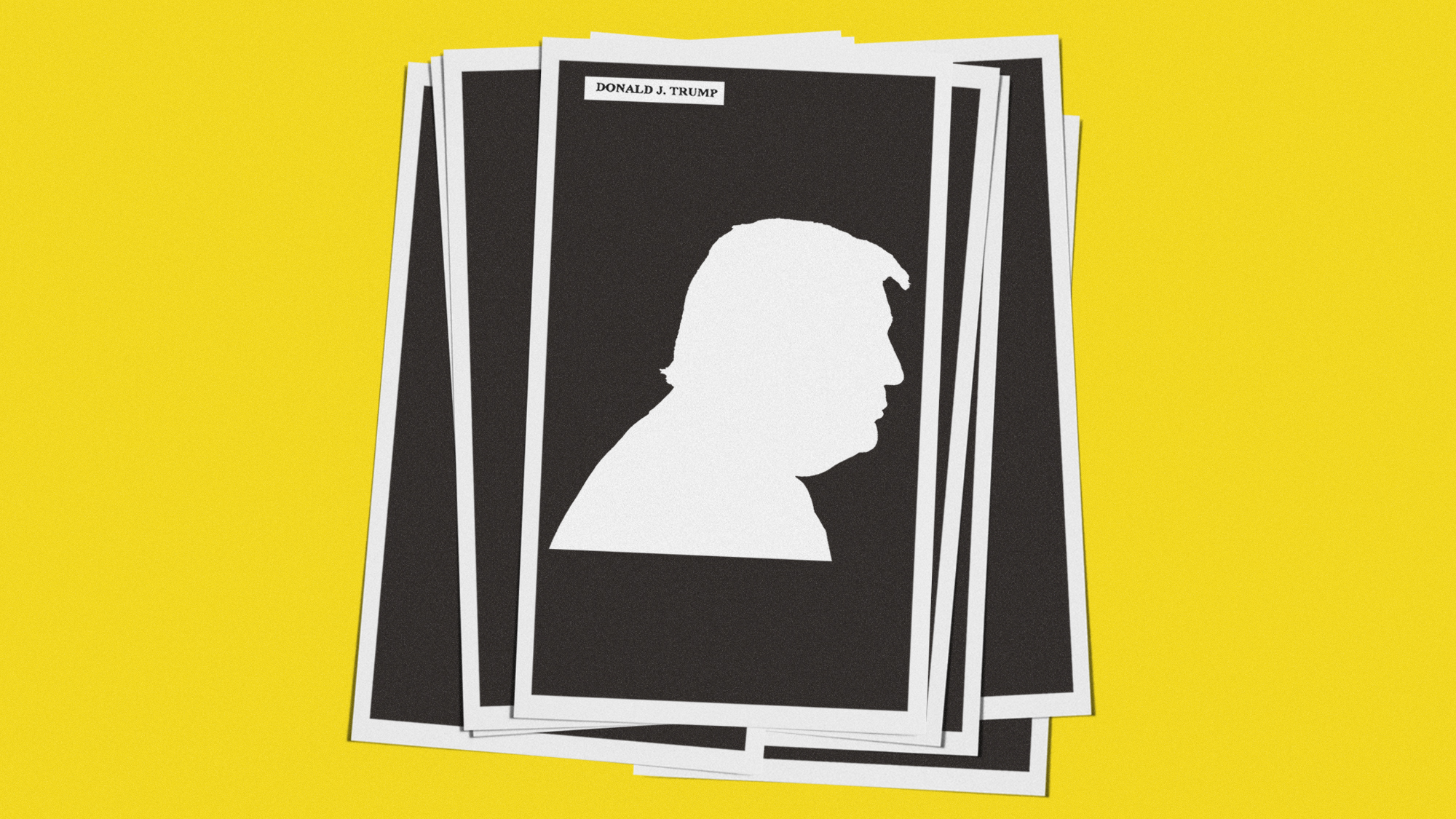The threat to the NIH
The Trump administration plans drastic cuts to medical research. What are the ramifications?

What is the National Institutes of Health?
It's the largest funder of biomedical research in the world by far and the force behind some of the biggest medical breakthroughs of the 21st century. Begun as a single-room laboratory in a Staten Island hospital in 1887, the NIH has ballooned into a $47 billion organization with thousands of employees. Through grants to hundreds of thousands of researchers, the NIH has aided in the discovery of semaglutide weight-loss drugs, HIV antiretrovirals, and life-saving leukemia treatments. Virtually every drug approved in the U.S. since 2010 was developed with some NIH funding. But this money is drying up. Earlier this month, President Trump accused the agency of "wasteful spending, misleading information, risky research, and the promotion of dangerous ideologies," and released a budget blueprint that would dramatically slash NIH funding by 40%. Many experts fear the cuts will throttle medical research for decades to come. That means, says Johns Hopkins pulmonologist Theodore Iwashyna, "the lives of my children and grandchildren—and maybe yours—will be shorter and sicker."
How does the NIH operate?
The vast agency comprises 27 centers, including the National Cancer Institute, the National Institute on Drug Abuse, and similar institutes for everything from environmental health to diabetes to strokes. Each institute selects which research projects in its particular field should be funded, and it does that by setting priorities and submitting each proposal to a peer-review process using outside experts. Some of the research takes place in-house at the NIH's campus in Bethesda, Md., but 85% of its budget is earmarked for grants. Each year, its institutes award 60,000 projects across some 2,500 institutions, with much of the money going to leading research facilities such as Johns Hopkins University; the University of California, San Francisco; and the University of Michigan. These grants typically allow up to five years to complete the project, offering a level of stability usually not available through private philanthropy.
What has this research accomplished?
It has saved millions of lives. An NIH developed vaccine virtually eliminated the most common cause of bacterial meningitis, and NIH-backed therapies have helped push cancer deaths down 34% since 1991. Former NIH director Frances Collins helped discover the gene responsible for cystic fibrosis, a disorder that once killed sufferers in young adulthood but now, with NIH-funded therapies, can be manageable for decades more. Findings from the ongoing Framingham Heart Study, which began in 1948, have shaped much of today's cardiovascular care. And years of NIH-funded mRNA vaccine research enabled scientists at pharmaceutical companies to develop a Covid vaccine in just six months, kicking off a global vaccination campaign that saved 14 million lives worldwide. Yet the Covid pandemic turned the NIH into a political lightning rod.
The Week
Escape your echo chamber. Get the facts behind the news, plus analysis from multiple perspectives.

Sign up for The Week's Free Newsletters
From our morning news briefing to a weekly Good News Newsletter, get the best of The Week delivered directly to your inbox.
From our morning news briefing to a weekly Good News Newsletter, get the best of The Week delivered directly to your inbox.
What happened during the pandemic?
As the understanding of the virus evolved, the NIH's public messaging took dizzying turns. Anthony Fauci, longtime director of the National Institute of Allergy and Infectious Diseases, went from saying "there is absolutely no reason whatsoever" to mask up in February 2020—when authorities feared shortages for health-care providers—to recommending mask mandates a few months later. School closures supported by the NIAID led to mental health problems and learning loss among students. The debate over whether Covid originated from a Wuhan market or the Wuhan virology lab made many suspect a cover-up, the more so when it came out that NIH officials tried to shield official correspondence from public view. Many Republicans blamed Fauci personally and the NIH generally for bungling the pandemic response, and they pointed to funding for things like a text-messaging service advising teen girls about various sex acts as evidence that the agency was too politicized. "There was a real erosion in trust in those agencies," says Joel Zinberg, a surgeon and special assistant to President Trump. The second Trump administration promised radical reforms.
What has the administration done?
Shortly after Inauguration Day, it froze NIH funding. It has since laid off nearly 5,000 NIH staffers and contractors, and those who remained were barred from funding new research. Some 800 grants already awarded were abruptly terminated mid-study, wasting the tens of millions of taxpayer dollars already spent. Many of these were DEI-related—because they addressed health inequities, for example, or LGBTQ needs, or looked at drug variation by sex or ethnicity—and others involved topics like vaccine hesitancy or climate change. Now the administration is proposing to introduce term limits, so no institute director would become as powerful as Fauci was, and to collapse the 27 institutes down to 15. Health Secretary Robert F. Kennedy Jr. and NIH Director Jay Bhattacharya have promised to focus less on infectious diseases and more on chronic conditions, as well as to defund any research infected with "political ideology."
What happens now?
It's unclear. There are several lawsuits contesting the administration's authority to yank funding from studies already underway and challenging its directive to cap the amount of a grant used for indirect lab costs. But in the meantime, the funding halts have caused universities to freeze hiring, forcing young postdoctoral medical researchers to decide between leaving their field or leaving the country. We're likely to see fewer medical breakthroughs, fewer vaccines, fewer new treatments. And the patients in the canceled studies—including trials for treatment of cancer, addiction, and long Covid—are left in limbo. When your clinical trial is taken away, says Alzheimer's patient Beth Humphrey, 68, "you're left with nothing but the disease."
Cancer in the crosshairs
The U.S. is the world's leading funder of cancer research, and no organization has done more than the NIH's National Cancer Institute. Described as the "crown jewel" of American biomedical research, its $8 billion in annual cancer funding is more than the American Cancer Society has been able to invest since it began funding research in 1946. NCI scientists have contributed to groundbreaking technologies such as immunotherapy, genomic analysis, T-cell treatments, and gene fusion as well as a vaccine that prevents cervical cancer. But since Trump took office, at least 200 NCI employees have been laid off and over $180 million in cancer grants have been terminated. Experts fear that if funding is slashed, the enormous gains made so far against cancer will come to a halt or even be reversed. Retired physician Larry Saltzman, a leukemia patient and former research director of the Leukemia and Lymphoma Society, says he's managed to survive 10 relapses because of NCI breakthroughs. "Without ongoing funding," he says, "I, like many others, would not be surviving the dreaded big C."
A free daily email with the biggest news stories of the day – and the best features from TheWeek.com
-
 Trump vs. states: Who gets to regulate AI?
Trump vs. states: Who gets to regulate AI?Feature Trump launched a task force to challenge state laws on artificial intelligence, but regulation of the technology is under unclear jurisdiction
-
 Decking the halls
Decking the hallsFeature Americans’ love of holiday decorations has turned Christmas from a humble affair to a sparkly spectacle.
-
 Whiskey tariffs cause major problems for American distillers
Whiskey tariffs cause major problems for American distillersIn the Spotlight Jim Beam is the latest brand to feel the pain
-
 Trump vs. states: Who gets to regulate AI?
Trump vs. states: Who gets to regulate AI?Feature Trump launched a task force to challenge state laws on artificial intelligence, but regulation of the technology is under unclear jurisdiction
-
 Danes ‘outraged’ at revived Trump Greenland push
Danes ‘outraged’ at revived Trump Greenland pushSpeed Read
-
 ‘Tension has been building inside Heritage for a long time’
‘Tension has been building inside Heritage for a long time’Instant Opinion Opinion, comment and editorials of the day
-
 The MAGA civil war takes center stage at the Turning Point USA conference
The MAGA civil war takes center stage at the Turning Point USA conferenceIN THE SPOTLIGHT ‘Americafest 2025’ was a who’s who of right-wing heavyweights eager to settle scores and lay claim to the future of MAGA
-
 CBS pulls ‘60 Minutes’ report on Trump deportees
CBS pulls ‘60 Minutes’ report on Trump deporteesSpeed Read An investigation into the deportations of Venezuelan migrants to El Salvador’s notorious prison was scrapped
-
 Trump administration posts sliver of Epstein files
Trump administration posts sliver of Epstein filesSpeed Read Many of the Justice Department documents were heavily redacted, though new photos of both Donald Trump and Bill Clinton emerged
-
 Is Trump deliberately redacting Epstein files to shield himself?
Is Trump deliberately redacting Epstein files to shield himself?Today’s Big Question Removal of image from publicly released documents prompts accusations of political interference by justice department
-
 What Nick Fuentes and the Groypers want
What Nick Fuentes and the Groypers wantThe Explainer White supremacism has a new face in the US: a clean-cut 27-year-old with a vast social media following